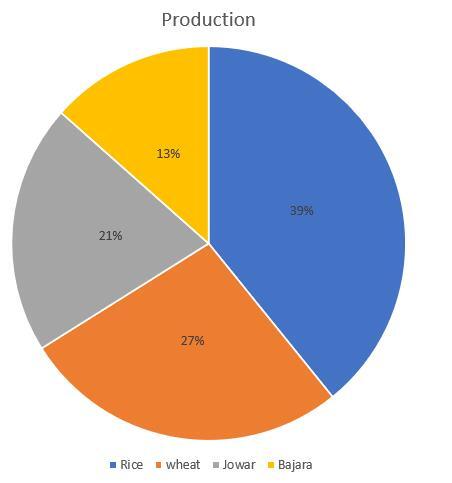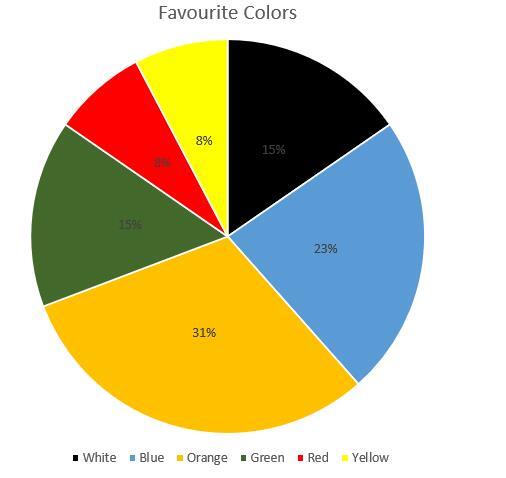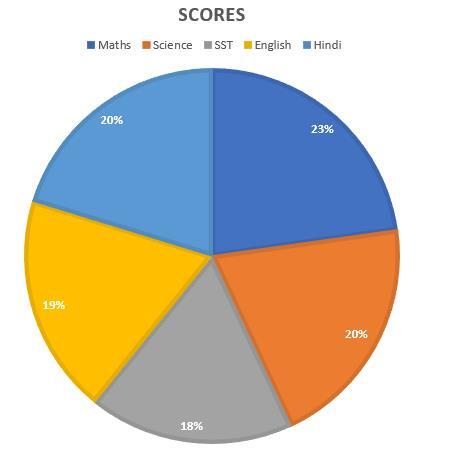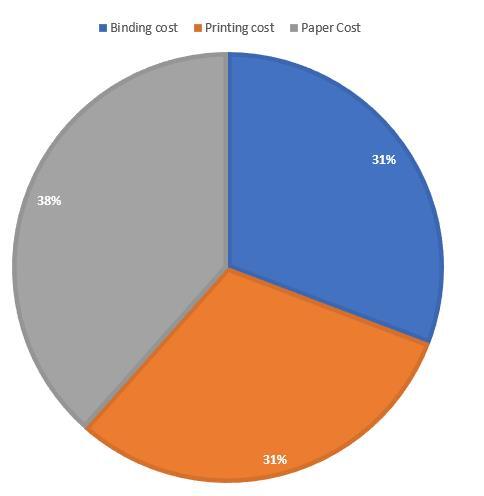
 Data Structure
Data Structure Networking
Networking RDBMS
RDBMS Operating System
Operating System Java
Java MS Excel
MS Excel iOS
iOS HTML
HTML CSS
CSS Android
Android Python
Python C Programming
C Programming C++
C++ C#
C# MongoDB
MongoDB MySQL
MySQL Javascript
Javascript PHP
PHP
- Selected Reading
- UPSC IAS Exams Notes
- Developer's Best Practices
- Questions and Answers
- Effective Resume Writing
- HR Interview Questions
- Computer Glossary
- Who is Who
Pie Chart
Introduction
Pie charts look like a slice of pizza (or pie); hence the name given was pie chart. The Statistical Breviary by William Playfair, published in 1801, is largely credited with creating the first known pie chart. Pie charts are frequently utilised in the media and in the business world. But because studies have shown that it can be difficult to compare data inside a single pie chart or between various pie charts, many experts advise against using them. Most of the time, pie charts can be replaced by other plots, such as bar charts, box plots, dot plots, etc.
Data
Data is a collection of discrete pieces of information in a conceptual model that, in their most basic forms, conveys quantity, quality, fact, statistics, or other fundamental units of meaning. It is used in the quest for knowledge
Pie Charts
The distribution of the total amount between levels of a categorical variable is shown on a pie chart as a circle with radial slices. Each categorical value is represented by a single slice of the circle, and the area and arc length of each slice show how much of the total each category level takes up.

Construction of Pie Charts
A visual depiction of data in relation to the whole is a pie chart. Each segment of the circle represents a component of the gathered information. The pie chart shows how different pieces come together to form a whole. The pie chart's overall value is always 100%. Each segment of the circle represents a percentage or fraction of the whole. A circular graph called a pie chart is used to display data. In this, The sectors of the circle indicate various observations of the data. At the centre, a 360° angle is created overall. The total of all the component values is represented by the circle. According to the specific observation component, the angle at the centre is given by
$$\mathrm{\frac{value\:of\:the\:component}{total\:value}\:\times\:360°}$$
The centre angle corresponding to a specific observation or component is given by if the values of the observation or component are expressed as percentages.
$$\mathrm{\frac{percentage\:value\:of\:the\:component}{100}\:\times\:360°}$$
The steps of the construction of a pie chart for a given data are as follows
We use the above formula to find the sectoral angle, which is also called the central angle of the pie chart for each entity in the data.
Then we draw a circle with a fixed centre of any radius.
Create a radius as a horizontal segment.
Draw radii beginning with the horizontal radius, with the central angles reflecting the values of each entity from the data.
Repeat the procedure for each entity of the provided data. Now, use different colours to shade the regions to indicate distinct entities.
As a result, we get the needed pie chart.
Following is the pie chart for the data composed of the favorite colours of the people in the particular region.

Conversion of Pie charts into Data Table
The pie chart displays the scores a student received in an exam. Calculate the student's scores in each of the mentioned subjects if the total score is 500.

Score in maths subject is $\mathrm{23\%\:of\:500\:=\:\frac{23}{100}\times\:500\:=\:23\times\:5\:=\:115}$
Score in science subject is $\mathrm{20\%\:of\:500\:=\:\frac{20}{100}\:\times\:500\:=\:20\times\:5\:=\:100}$
Score in s.st. subject is $\mathrm{18\%\:of\:500\:=\:\frac{18}{100}\:\times\:500\:=\:18\times\:5\:=\:90}$
Score in English subject is $\mathrm{19\%\:of\:500\:=\:\frac{19}{100}\:\times\:500\:=\:19\times\:5\:=\:95}$
Score in Hindi subject is $\mathrm{20\%\:of\:500\:=\:\frac{20}{100}\:\times\:500\:=\:20\times\:5\:=\:100}$
| Scores | 115 | 100 | 90 | 95 | 100 |
| Subject | maths | science | S.St. | English | Hindi |
Solved Examples
1) The percentage breakdown of the cost associated with book publishing is displayed in the following pie chart. Examine the pie chart, then respond to the questions based on it.

What amount of binding is expected to be paid for these books if the publisher is required to pay Rs. 30,000 for their printing?
What is the sector's focal point in relation to the money spent on binding?
The book's price is indicated as 10% more than C.P. What is the cost of the paper used in one copy of the book if it has a listed price of Rs. 150?
Answer
Let the amount of binding expected to be paid for these books be RS. ? then,
Sectoral angle corresponding to binding cost $\mathrm{=\:\frac{31}{100}\:\times\:360°\:=\:111.6°}$
The Market price of the book is 110% of the cost price, and the cost of paper is 38% of the cost price. Let the cost of paper for a single book be RS. ?. Then,
$$\mathrm{\frac{31\%}{31\%}\:=\:\frac{x}{30000}\:\Longrightarrow\:x\:=\:30,000}$$
as the cost for the binding and printing is in the same proportion.
$$\mathrm{\frac{110}{38}\:=\:\frac{150}{x}\:\Longrightarrow\:x\:=\:51.81}$$
Conclusion
An image of data that resembles a pie with slices indicating the size of the data is called a pie chart. A list of numerical variables and categorical variables is needed in order to display data as a pie chart. The area and central angle produced by each slice in a pie chart are proportional to the quantity that it represents because each slice has an arc that is proportionate to that quantity.
FAQs
1. What kind of information does a pie chart display?
Nominal or categorical data are suitable for pie charts
2. What situations are pie charts most helpful in?
When attempting to determine the makeup of anything, a pie chart works best. A pie chart works exceptionally well when you have categorical data since each slice can represent a distinct category.
3. Why is a pie chart effective?
Pie charts perform best, with percentages around 25%, 50%, or 75%. As opposed to a stacked bar or column chart, a pie chart makes it simpler for readers to identify these percentages. If you want readers to compare the size of shares, pie charts are not the greatest alternative. This is especially true if there are little disparities in the shares.
4. Why are pie charts a useful tool for data visualization?
It can be an effective technique for communicating with even the most uneducated audiences because it graphically represents data as a small piece of a larger total. It makes it possible for the audience to easily understand information or compare data in order to do an analysis.
5. Pie charts: Why do we use them?
Pie charts are used to display relative or proportional data in a single chart. Pie slices are used to represent percentages of various data from the entire pie
6. A pie chart is divided into three equal portions, each with an angle of ??, ?? ??? ??. Identify ?'s degree value and hence the values of each portion.
We are aware that the total of all the angles in a pie chart is 360 degrees. Thus,
$$\mathrm{2x\:+\:3x\:+\:5x\:=\:360°}$$
$$\mathrm{10x\:=\:360°}$$
$$\mathrm{x\:36°}$$
Thus,
The value of the portion $\mathrm{2x\:=\:2\times\:36\:=\:72°}$
The value of the portion $\mathrm{3x\:=\:3\times\:=\:108°}$
The value of the portion $\mathrm{5x\:=\:5\times\:36\:=\:180°}$

